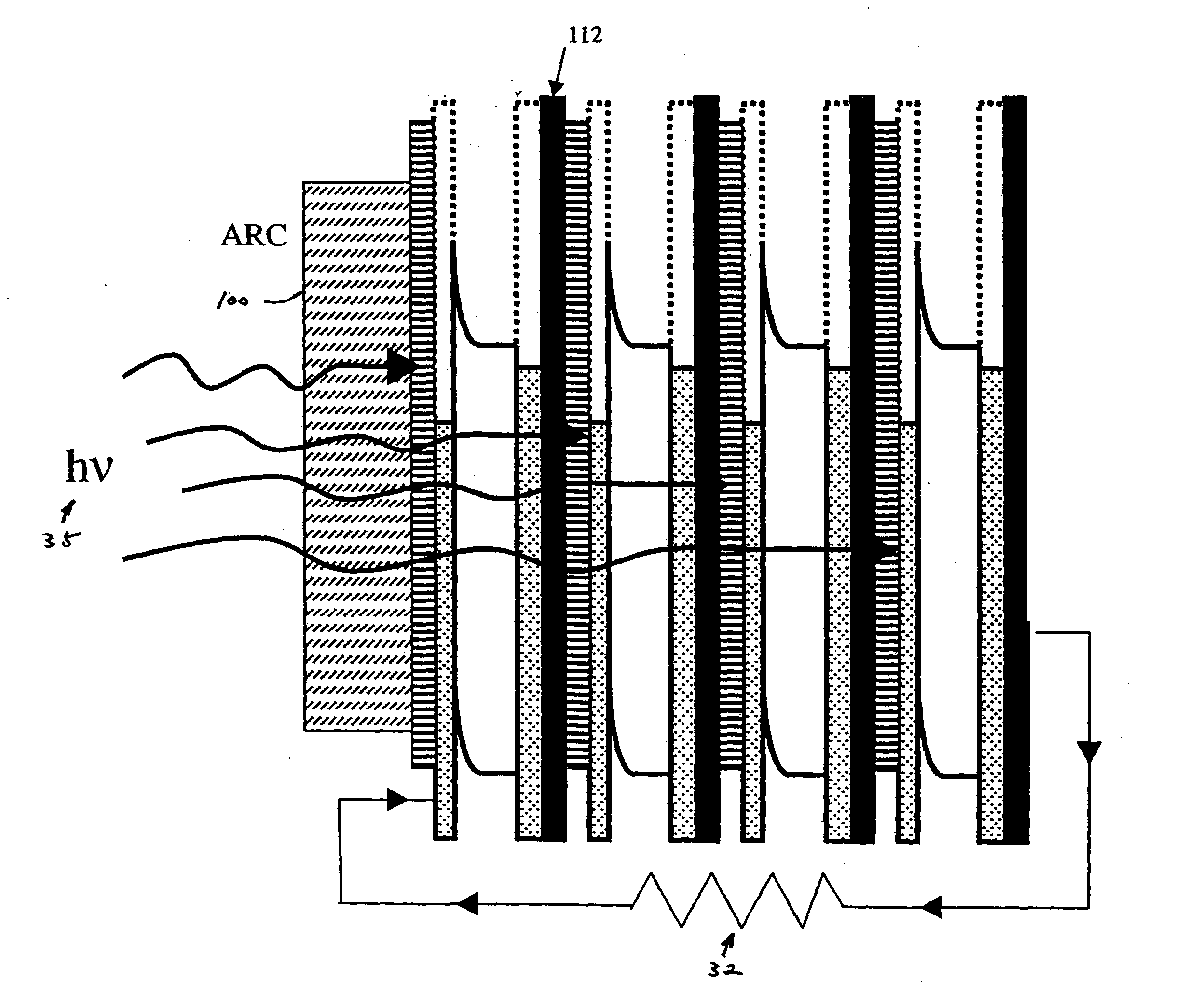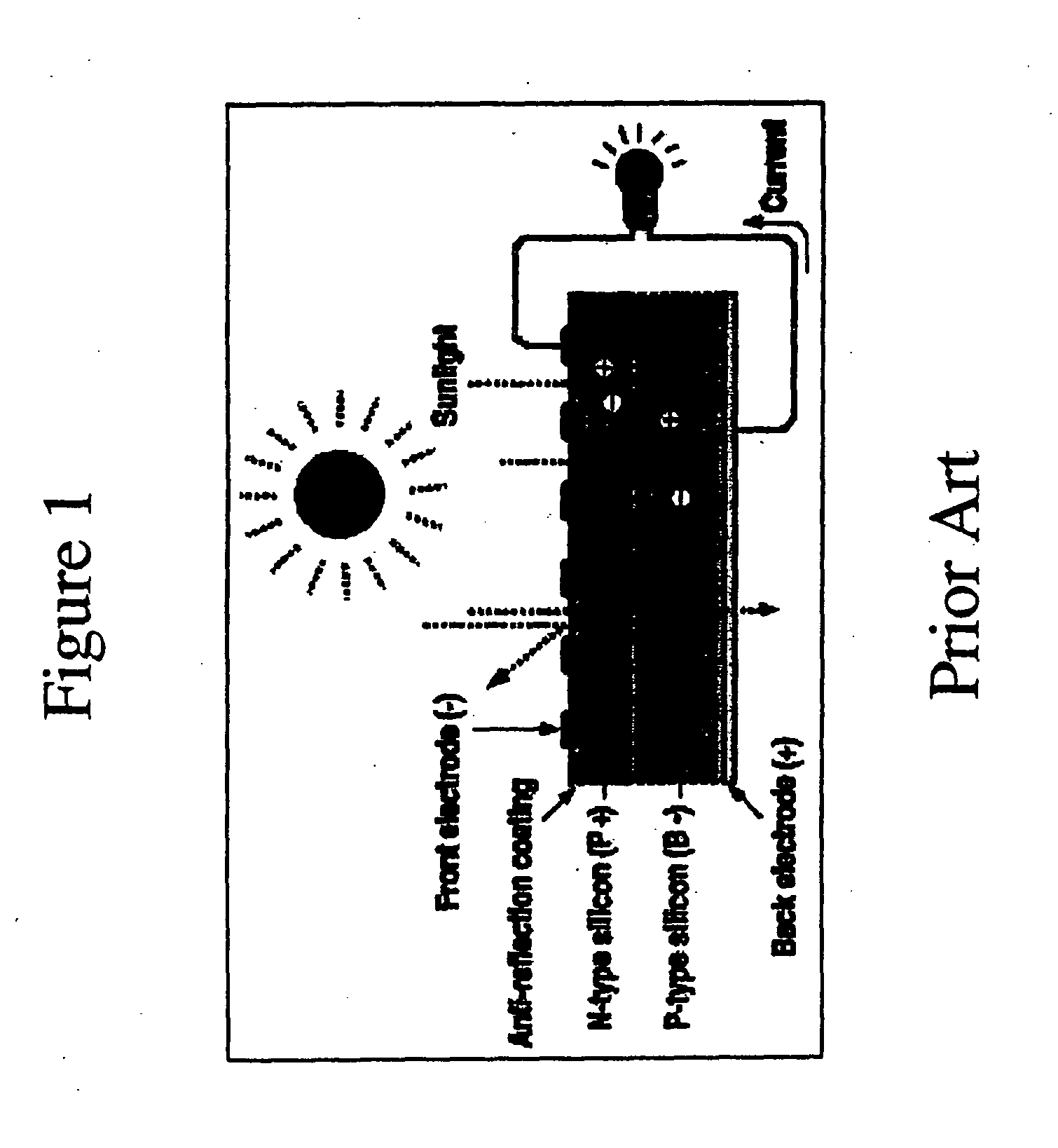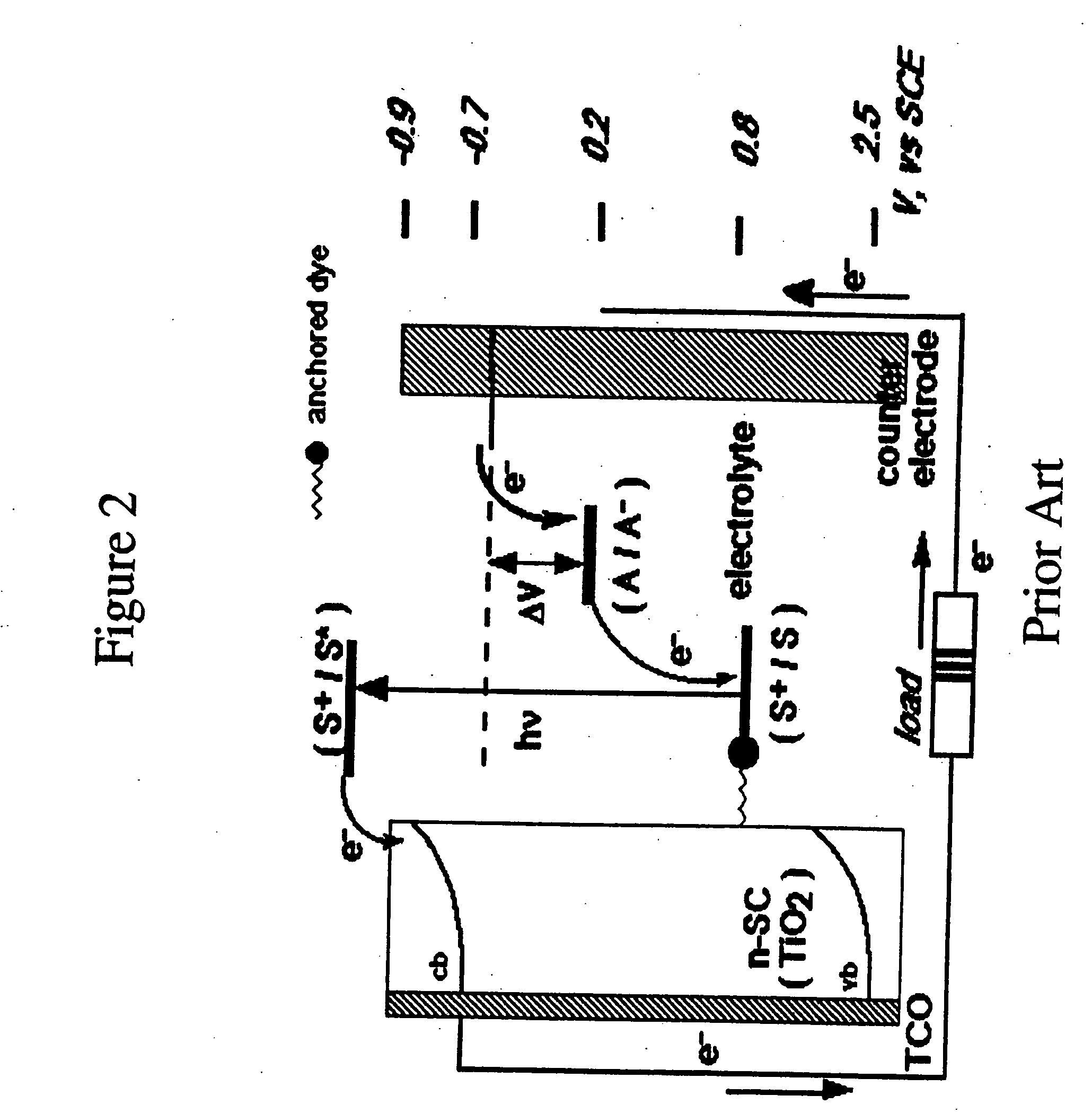Apparatus and method for photovoltaic energy production based on internal charge emission in a solid-state heterostructure
a photovoltaic energy and heterostructure technology, applied in the field of photovoltaic cells, can solve the problems of limited material and device structure, high manufacturing cost, and inability to meet the requirements of cells, and achieve the effect of promoting the longevity of solar cells and increasing the longevity of solar cell devices
- Summary
- Abstract
- Description
- Claims
- Application Information
AI Technical Summary
Benefits of technology
Problems solved by technology
Method used
Image
Examples
Embodiment Construction
[0037] Various embodiments of the present invention will be described with reference to FIGS. 3-11. Although only a limited number of embodiments of the invention are described hereinafter, it shall be understood that the detailed discussion of the embodiments is not intended to limit the present invention to those particular embodiments.
[0038]FIG. 3 illustrates a photosensitized solid-state device in accordance with the preferred embodiment of the present invention. More specifically, the photosensitized solid-state device includes a photosensitive layer 10, a front conducting layer 31, a charge separation layer 39, a back conducting layer 30, and a load 32. The front conducting layer 31 is preferably an ultra-thin metal film (preferably in the nanometer range), while the back conducting layer 30 is preferably an ohmic conducting layer. The charge separation layer 39 has a determinable conduction band energy level 38 and a determinable valence band energy level 37. In an alternati...
PUM
| Property | Measurement | Unit |
|---|---|---|
| thickness | aaaaa | aaaaa |
| band gap | aaaaa | aaaaa |
| thickness | aaaaa | aaaaa |
Abstract
Description
Claims
Application Information
 Login to View More
Login to View More - R&D
- Intellectual Property
- Life Sciences
- Materials
- Tech Scout
- Unparalleled Data Quality
- Higher Quality Content
- 60% Fewer Hallucinations
Browse by: Latest US Patents, China's latest patents, Technical Efficacy Thesaurus, Application Domain, Technology Topic, Popular Technical Reports.
© 2025 PatSnap. All rights reserved.Legal|Privacy policy|Modern Slavery Act Transparency Statement|Sitemap|About US| Contact US: help@patsnap.com



